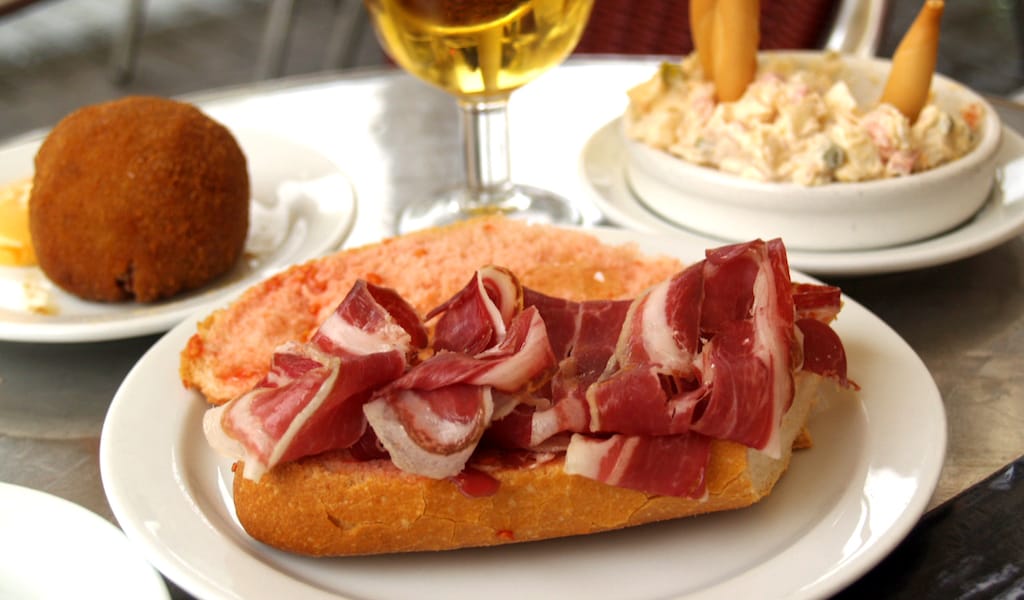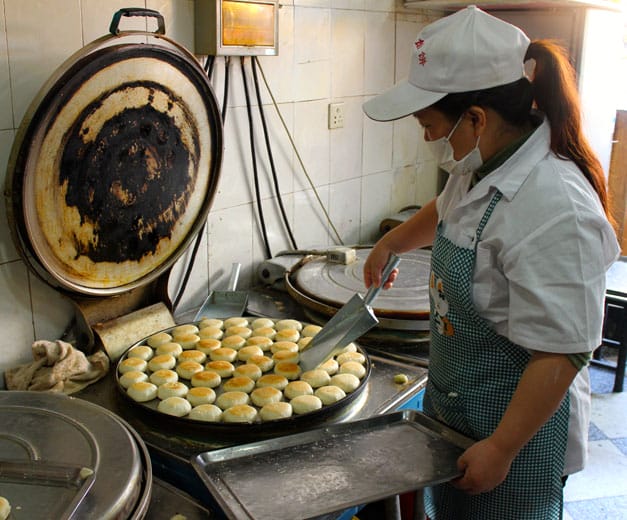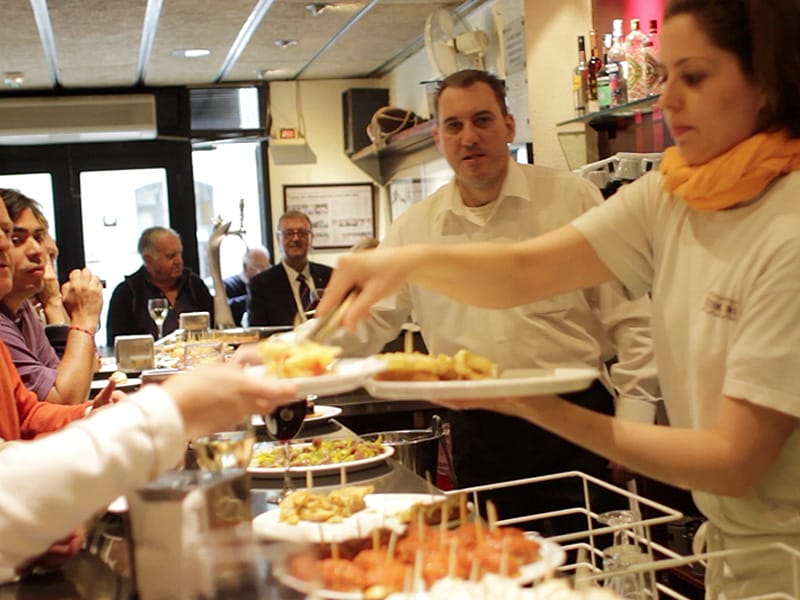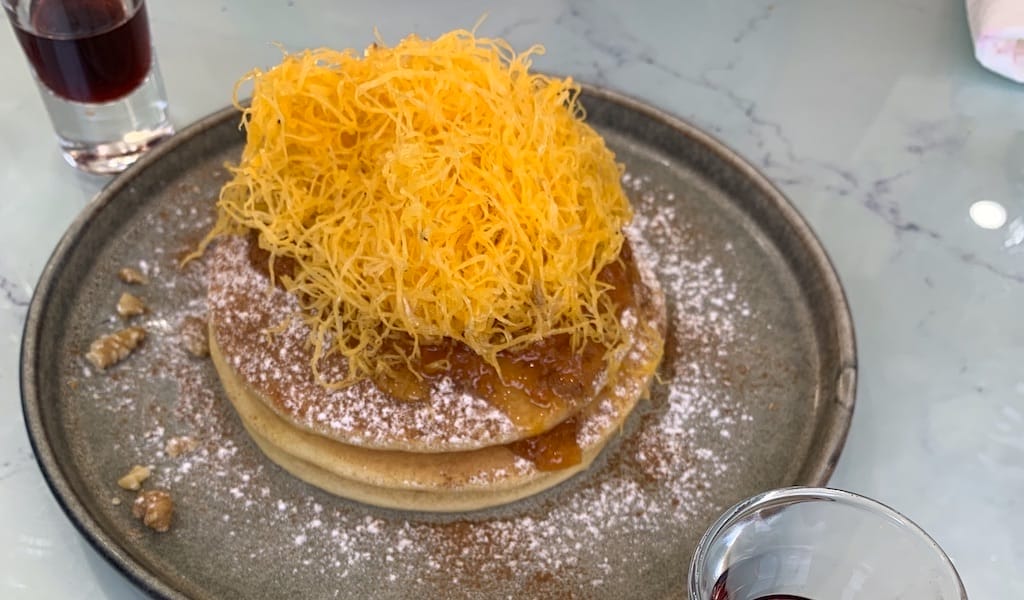Editor’s note: We regret to report that El Jabalí de Ronda has closed.
Barcelona’s Avinguda del Paral·lel was, for the first half of the 20th century, a bustling boulevard of theaters, cabarets, circus shows and risqué nightlife. Nowadays, most of the grand buildings and the glamour of the thoroughfare have been erased by the rapid changes that have taken place in Barcelona, with just a few theaters and old bars from the glory days still open. Thankfully, one of the holdouts is the quirky El Jabalí de Ronda, a combination delicatessen, butcher shop and tapas bar, which still welcomes customers with its signature legs of acorn-fed Iberian ham and its cozy terrace and vases of freshly cut flowers.
El Jabalí de Ronda was opened in 1958, still during the good times of “El Paral·lel” (so named because it runs parallel to the equator), by Paquita Fisas and her husband Emilio García, who took over a local tapas bar that originally belonged to Paquita’s twin brothers. At the time, Emilio’s family had a butcher-delicatessen stall inside the nearby Mercat de Sant Antoni, so the couple decided to bring the little charcutería into their new venue.
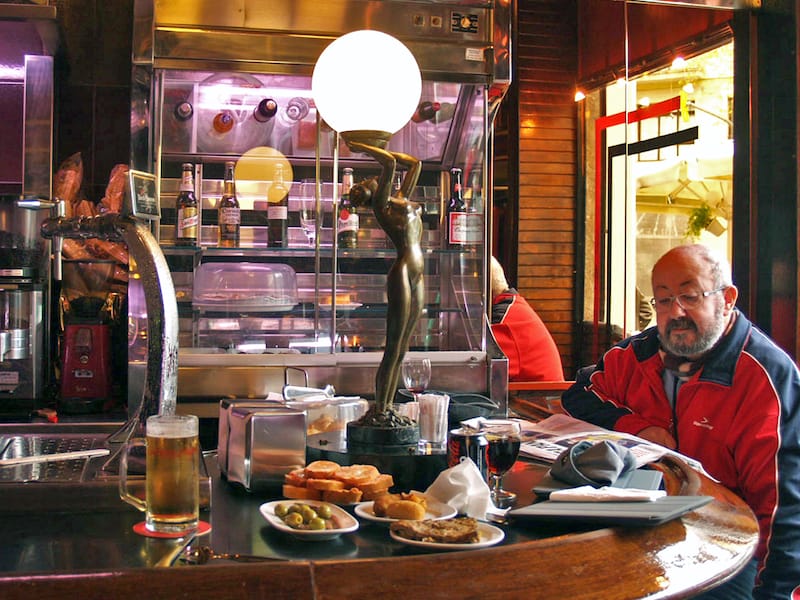
As it always has, El Jabalí de Ronda (“The Wild Boar of Ronda”) offers a delightful menu of tapas based on the delicatessen products they carry – aged Castilian and creamy Catalan cheeses, Iberian chorizo, Catalan botifarra sausages – served as hot and cold bocadillos, tapas and raciones (a portion bigger than a tapa but still meant to be shared). We are particularly fond of the ham “bomb,” a hot tapa that consists of small pieces of Iberian ham and some minced onion mixed with chunks of potato into a big ball that is then covered with egg and bread crumbs and deep-fried. The tasty ball is served with a spicy, oil-based sauce of tomato, garlic, cayenne pepper and a little vinegar.
Another of El Jabalí’s famous tapas is their superb Russian salad, made with canned tuna (the good Spanish kind) and a sweet ham mixed with freshly cooked potatoes, carrots, beans and peas, all held together by a delicate mayonnaise. Prepared fresh daily by the chef, this almost artisanal take on Russian salad is served only after being personally tasted by the owners, who seem to take great pride in this sometimes maligned dish. El Jabalí also offers some traditional cooked items, such as Catalan beans with botifarra or cod, and callos (spicy pork tripe), as well as some popular cold salads, like the classic esqueixada, made with tomatoes, onions, peppers and olives that are mixed with pieces of cod (in this case fresh, as opposed to the more traditional bacalao, or dried salt cod).
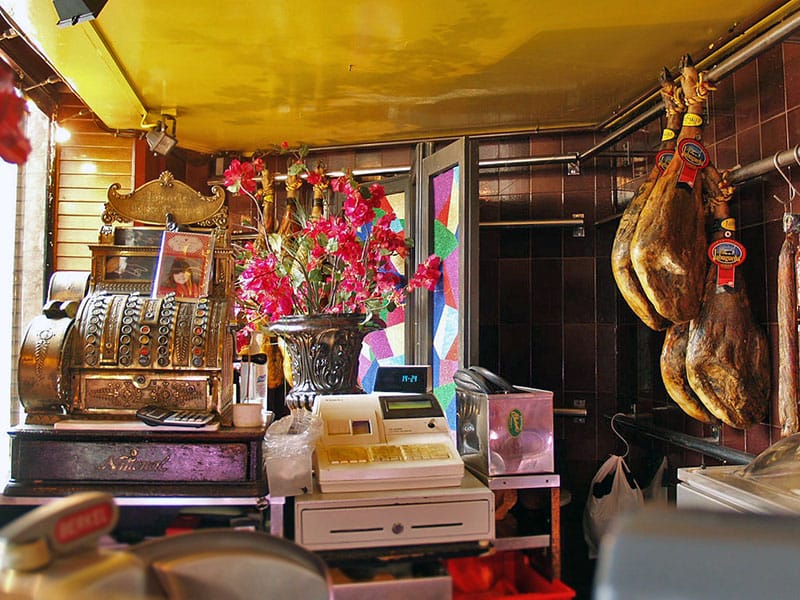
But the main star of the show here is the Iberian acorn-fed ham, jamón ibérico de bellota. Ever since Jabalí first opened, Emilio, now with his son Jordi, has been making regular trips to two ham hot spots – Salamanca, in the Castile and León region, and Huelva, in Andalusia – to select and mark their favorite cuts. Then, depending on demand, they bring to Barcelona the hams they need and leave the rest in special drying places called secaderos (large, naturally ventilated warehouses in the villages where the ham is sourced), to keep them curing in optimum conditions. These hams, considered by connoisseurs to be among the finest of the Iberian hams, come from pigs who in their last three or four months are fed only acorns. The resulting ham has a deep red color, an intense flavor that is not salty and is even a bit sweet, and a rich layer of fat that leaves a characteristic astringent feeling in the mouth (similar to effect of tannins in wines on the palate) – a peculiar feeling that people tend to either love or hate.
Open from morning to late at night, El Jabalí de Ronda remains a good place to stop and eat something before or after going to a show at one of El Paral·lel’s remaining theaters. It is even visited by some of the actors and singers still performing on the strip, who now find the spot filled with veteran locals and their grandchildren. The glamorous old times may be gone from the area, but don’t tell that to the owners of El Jabalí, who continue to keep the ham stocked and the vases filled with flowers, still as fresh as ever.
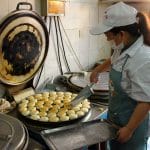 February 3, 2015 Dwarf’s Pastries
February 3, 2015 Dwarf’s Pastries
Shouning Lu is known as Crawfish Street, with street food vendors often stewing, […] Posted in Shanghai August 20, 2012 Taktika Berri
August 20, 2012 Taktika Berri
When Julián Fernández and Carmen Erdocia moved to Barcelona in 1996, they bought an old […] Posted in Barcelona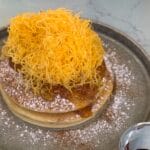 December 22, 2023 Best Bites 2023: Lisbon
December 22, 2023 Best Bites 2023: Lisbon
This year, our Lisbon team was busy exploring place both near and far. Correspondent […] Posted in Lisbon
Published on April 09, 2013
Related stories
February 3, 2015
ShanghaiShouning Lu is known as Crawfish Street, with street food vendors often stewing, grilling and frying up the same seafood dishes up and down the one-block stretch. But there’s one land-lubbing vendor that has carved out a niche for itself: Ǎizi Xiànbǐng (矮子馅饼), or Dwarf’s Pastries. The eponymous snack (which, admittedly, translates crudely into English)…
August 20, 2012
Barcelona | By Hollis Duncan
BarcelonaWhen Julián Fernández and Carmen Erdocia moved to Barcelona in 1996, they bought an old fútbol salon in the Eixample that was named Táctica, or “tactics,” in a reference to Spanish football. Julián and Carmen began serving pintxos such as tortilla de bacalao (Spanish omelet with codfish) to hungry futboleros. Eventually, the venue became so…
December 22, 2023
LisbonThis year, our Lisbon team was busy exploring place both near and far. Correspondent Austin Bush, who moved to the city almost two years ago, has been able to go deeper – and farther – in his pursuit of food as his Portuguese improves. As a result, the dishes, ingredients and drinks that most excited…







































